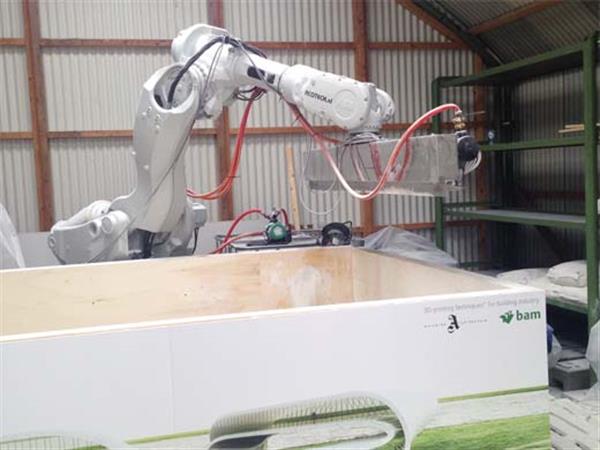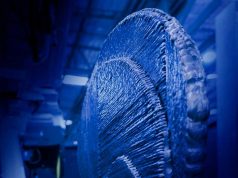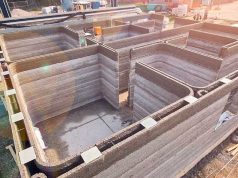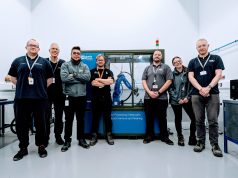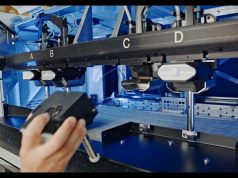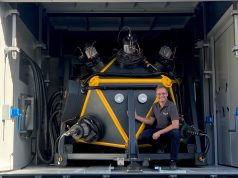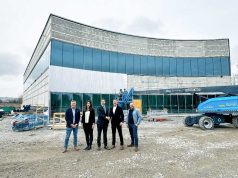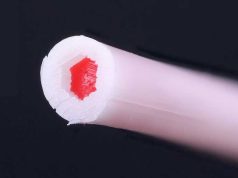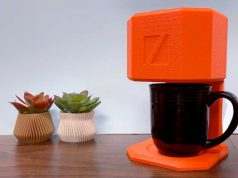For bigger objects it’s quit useful to combine a robotic arm with a 3D printer head. And exactly this combination is printing objects in Amsterdam.
3D Builder is a project that the University of Architecture in Amsterdam and the construction and building company BAM have teamed up for. Back in April the university opened the “FabCity” – that’s a place where companies, students and professors can work together on solutions for the future.
One of these solutions could be 3D Builder – the project team has “large goals” – they want to 3D print a house with the technique they have developed. In the next few weeks a house the scale of 1:4 will be printed with the 3D Builder. That’s also the first big test of the 3D Builder after the already created concrete bench. Anyway there seems to be a pretty good partnership between the university and BAM.
It’s fantastic to work together and develop a machine that makes new innovations possible. This was much more common for architects during the Renaissance
The technique used for the print head, mounted on the head of the robot arm, is also pretty interesting. If wanted it can be changed easily. The currently used print head works similar to an inkjet print head. A mixture of sand and concrete and other materials is applied layer by layer. After each layer the print head moves over the layer and applies a liquid binder. Everywhere where the binder is applied the objects hardens. The unused sand is removed after the printing process. There is an video available that shows this process quit well:
One big advantage of this project is that the sand and concrete mixture can be reused and failed prints can be shredded and reused too.
Concrete granules, but also previously made prints, can be used as a building material
The big disadvantage of the used technique is that the sand and concrete mixture has to be applied before the printing can be started – it was not unveiled how this should work for very large objects like houses.
Subscribe to our Newsletter
3DPResso is a weekly newsletter that links to the most exciting global stories from the 3D printing and additive manufacturing industry.



